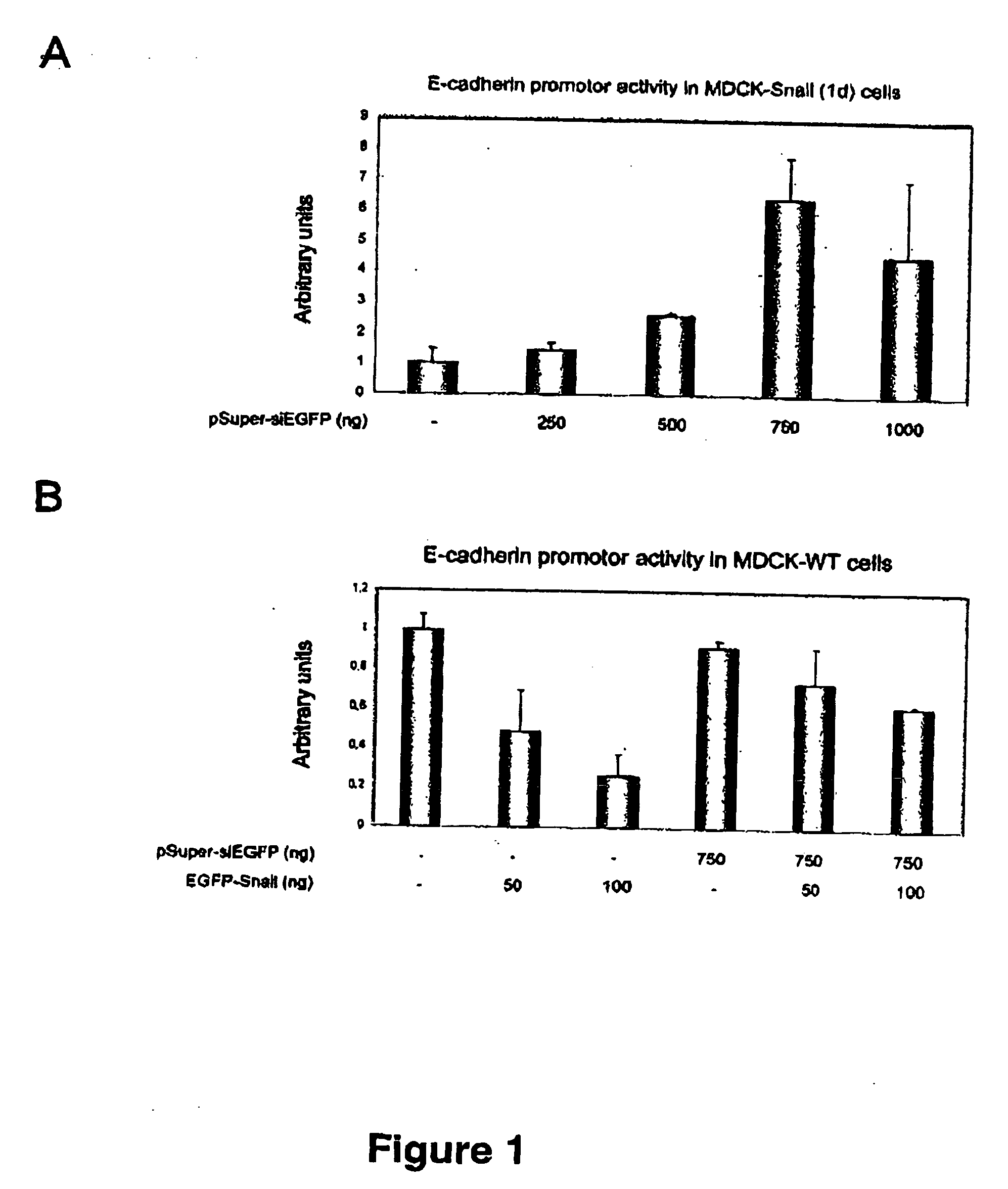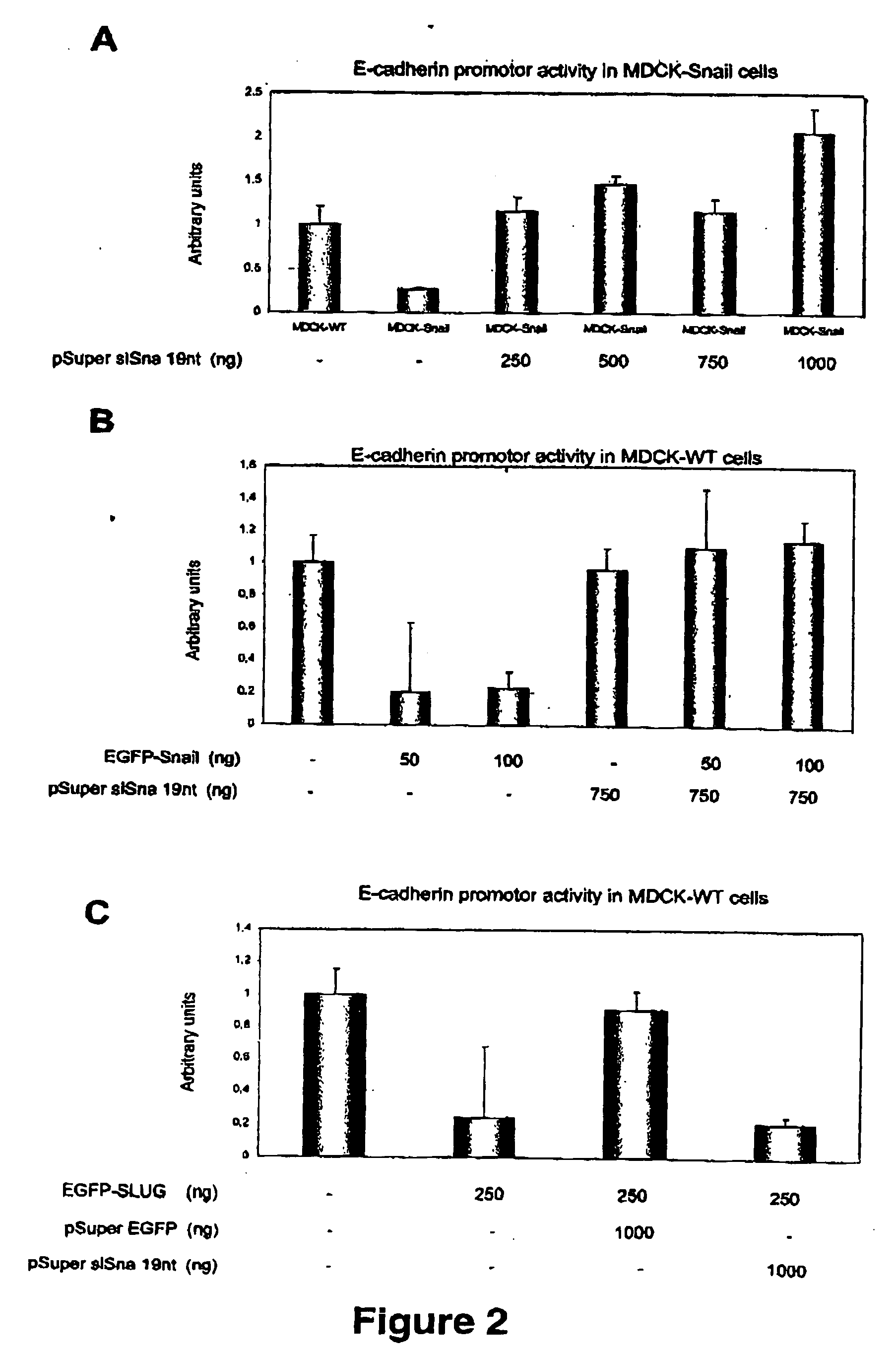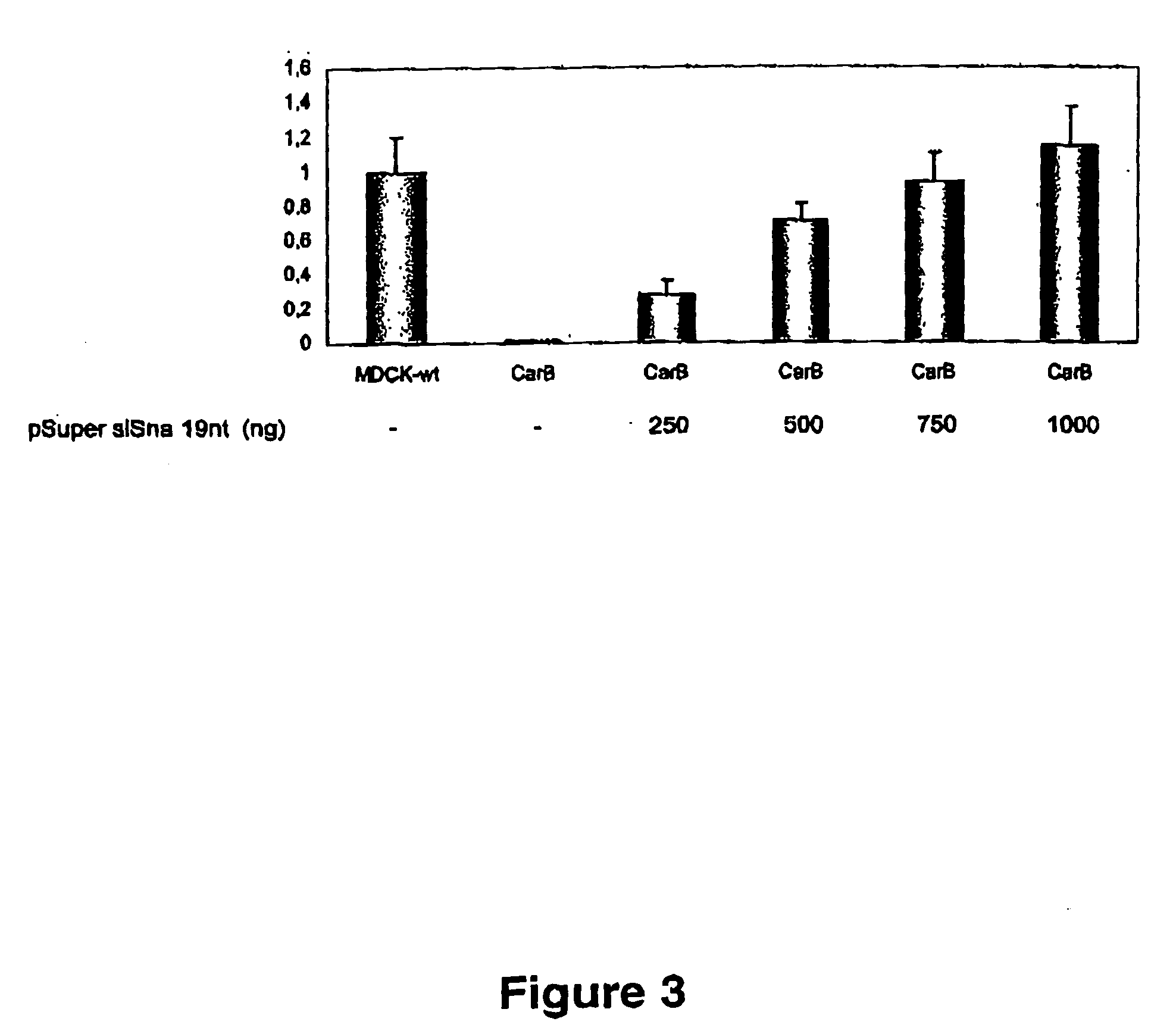Materials and methods for the derepression of the E-cadherin promoter
- Summary
- Abstract
- Description
- Claims
- Application Information
AI Technical Summary
Benefits of technology
Problems solved by technology
Method used
Image
Examples
example 1
siRNA Inhibits the Snail-Mediated Repression of E-Cadherin Promoter
[0118] RNA interference technology was used to block Snail expression and the subsequent E-cadherin promoter repression. As a first stage, we developed EGFP-Snail fusion constructs and generated stable transfectant cell lines from MOCK cells. One of the MDCK-EGFP-Snail clones (1d) exhibited the EMT changes previously characterized in MDCK-Snail cell lines (Cano et al., 2000). 1d cells exhibit a fibroblastic-like phenotype, with complete absence of E-cadherin expression (data not shown) and maintain a stable low level of EGFP-Snail and repression of E-cadherin at the promoter level (FIG. 1A). Furthermore, association of EGFP-Snail to endogenous E-cadherin promoter in 1d cells has been conclusively detected by using chromatin immunuprecipitation analysis (Peinado et al., 2004).
[0119] Caplen et al, 2001 describes the design of siRNA oligonucleotides against a region of the GFP cDNA sequence. We cloned these siRNA olig...
example 2
siRNA Against GFP Inhibits EMT Induced in MDCK Cells Expressing GFP-Snail
[0121] Stable transfectants of siRNA-GFP-pSuper in MDCK-EGFP-Snail (clone 1d) cells, co-transfected with a puromycin resistant vector to allow proper selection, were isolated and analysed by their phenotype and migratory behaviour. The generated siEGFP-cells (1d-siEGFP) showed a dramatic change in their phenotype, acquiring an epithelial morphology with apparent cell-cell contacts (data not shown). Immunofluorescence analysis of the 1d-siEGFP cells indicated re-expression of E-cadherin at cell-cell contacts and strong reduction in expression of vimentin, a typical marker of mesenchymal cells (data not shown). RT-PCR analyses indicated that stable transfection of pSuper-siEGFP construct induced the complete silencing of EGFP-Snail mRNA (data not shown). These results clearly indicate that suppression of EGFP-Snail expression induces the reversion of EMT, leading to reacquisition of an epithelial phenotype in MD...
example 3
siRNA Specific to Snail Inhibits Snail-Mediated Repression of E-Cadherin Promoter in Carcinoma Cells
[0148] To obtain further evidence of the efficiency of Snail-Si-RNA-19 nt as a tool to specifically suppress endogenous Snail expression, we have analysed its effect on a previously characterized carcinoma cell line (CarB).
[0149] CarB cells are derived from a mouse skin spindle cell carcinoma, showing a fibroblastic morphology and highly tumorigenic and metastatic phenotype, and they are completely deficient in E-cadherin expression (Navarro et al., 1991). Furthermore, CarB cells show a complete repression of E-cadherin promoter activity (Faraldo et al., 1997) and express high levels of endogenous Snail and Slug factors (Cano et al., 2000). They also express E47 (Perez-Moreno et al., 2001).
[0150] Analysis of E-cadherin promoter activity was performed in CarB cells in the absence or presence of Snail-Si-RNA-19 nt. As shown in FIG. 3, E-cadherin promoter activity of CarB cells is ext...
PUM
| Property | Measurement | Unit |
|---|---|---|
| Fraction | aaaaa | aaaaa |
| Length | aaaaa | aaaaa |
| Pharmaceutically acceptable | aaaaa | aaaaa |
Abstract
Description
Claims
Application Information
 Login to View More
Login to View More - R&D
- Intellectual Property
- Life Sciences
- Materials
- Tech Scout
- Unparalleled Data Quality
- Higher Quality Content
- 60% Fewer Hallucinations
Browse by: Latest US Patents, China's latest patents, Technical Efficacy Thesaurus, Application Domain, Technology Topic, Popular Technical Reports.
© 2025 PatSnap. All rights reserved.Legal|Privacy policy|Modern Slavery Act Transparency Statement|Sitemap|About US| Contact US: help@patsnap.com



